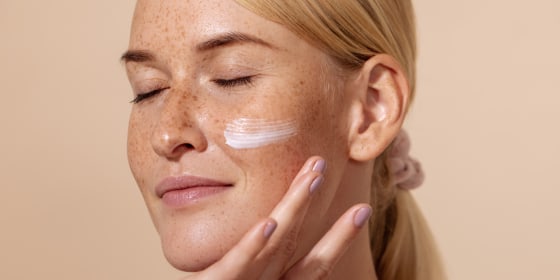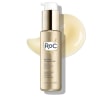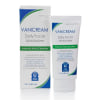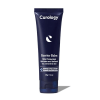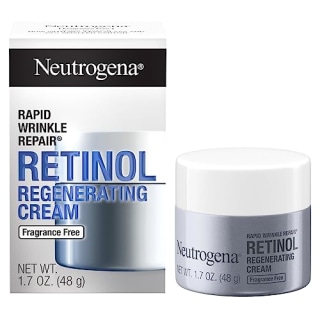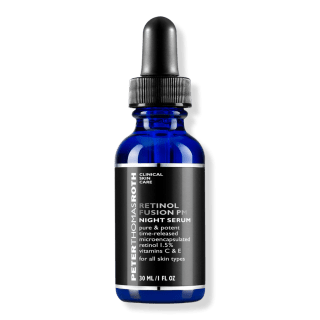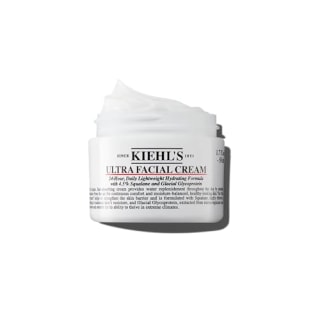Ever heard of a retinol sandwich? No, it’s not something you can order at a deli. It’s a skin care trend that’s been popping up on TikTok, and it involves applying moisturizer before and after you apply retinol — so you are literally sandwiching the retinol between layers of hydration. People are so interested in this technique that there are tens of millions of views on videos featuring this technique on social media.
Why are so many people trying it? I spoke with two board-certified dermatologists to ask them that very question. Here, they explain why it has become popular, what it does and whether or not it is worth trying.
What is retinol sandwiching?
Before diving into why retinol sandwiching is trending, it’s important to understand retinol as an ingredient. Retinol is derived from vitamin A; experts have previously told us it can boost skin cell turnover and increase collagen production. Because of this, it is often used to address issues associated with aging skin, like fine lines and dark spots. The only downside to this ingredient? Some find that it can be drying or harsh on sensitive skin.
That’s where retinol sandwiching comes in. “It’s essentially a technique that helps patients tolerate retinol, which can be drying,” says Dr. Amy Basile, a board-certified dermatologist at Dermatology Partners in Pennsylvania, who says she’s seen people either apply moisturizer before and after applying retinol or mix their retinol directly with moisturizer to try this trend.
The benefits of retinol sandwiching
“Retinol sandwiching creates a ‘sustained release’ barrier to slow down the absorption of the retinol and thus decrease irritation,” explains Dr. Jimmy Sung, the medical director at Tribeca Aesthetics.
It’s particularly good for those who may not tolerate retinol well. “Anyone with sensitive skin can try this method,” says Basile. “It is also good for those who may want to use a stronger level of retinoids.” Sung adds that those with darker skin tones tend to be more sensitive to retinol, which may also be a good technique for those with darker skin.
How to try retinol sandwiching
Want to try retinol sandwiching? It’s easy. Put on a hydrating moisturizer and let it absorb. Then, put on your retinol product and apply more moisturizer. “I suggest putting on your daily moisturizer first because it tends to be lighter,” says Basile. “Then, you can follow it with a heavier moisturizer on top to seal it in.”
If you want to try a slightly less labor-intensive play on this trend, Basile suggests mixing the retinol into a heavier moisturizer and applying it all at once. This should give you the same benefits you’d get if you layered it.
Products to use when retinol sandwiching
Below, find retinols and moisturizers you can use to try retinol sandwiching. All the products below are either NBC Select staff favorites or have been recommended to us by experts.
Experts have previously recommended this serum to us, pointing out that it is ideal to use after cleansing at night, before you put on moisturizer. It has more than 100 clinical studies to confirm its effectiveness in improving sagging skin and skin texture, according to the brand. In addition to the retinol, it contains a mineral complex to hydrate skin, according to RoC.
Another expert-recommended retinol, Neutrogena’s Rapid Wrinkle Repair Retinol Cream, also contains hyaluronic acid to help prevent irritation, according to the brand. The formula is fragrance-free and on the thicker side. It has a 4.4-star average rating from over 17,380 reviews on Amazon.
This serum is intended to be used at night and has 1.5% retinol. It also contains vitamins C and E. and squalane, to hydrate, according to the brand. The retinol is time-released, meaning that it is encased in a lipid that dissolves as it sits on skin so it penetrates more slowly. This helps it be less irritating, according to the brand.
Moisturizers to use when retinol sandwiching
This daily cream made our list of best moisturizers. NBC Select editorial director Lauren Swanson says it works great on her dry, flaking, peeling skin. The formula is free of fragrances, parabens and dyes and is noncomedogenic, so it won’t clog pores. The simplicity of this moisturizer makes it a great option to layer onto skin before applying a retinol.
Our experts said it’s smart to use a heavier moisturizer after applying your retinol to lock it in. This one feels more like a balm than a lotion and is super hydrating. The formula is occlusive, so it sits on the skin and acts as a barrier to keep moisture locked in. Any excess left on your hands can also be rubbed on your hands and cuticles for quick hydration.
If you want just one moisturizer you can sandwich your retinol with, this option from Kiehl’s is a good pick because it’s not too thick but is also not too thin. It contains squalane as one of the main sources of hydration and ceramides, which experts have told us can restore your skin’s moisture barrier. The formula also absorbs quickly, according to the brand, so you won’t have to wait long before applying your retinol.
Meet our experts
At NBC Select, we work with experts with specialized knowledge and authority based on relevant training and/or experience. We also ensure all expert advice and recommendations are made independently and without undisclosed financial conflicts of interest.
- Dr. Amy Basile is a board-certified dermatologist at Dermatology Partners in Pennsylvania.
- Dr. Jimmy Sung is the medical director at Tribeca Aesthetics in New York.
Why trust NBC Select?
Bethany Heitman is a contributor at NBC Select and a journalist who regularly covers topics like beauty, home and lifestyle. For this story, she interviewed dermatologists on retinol sandwiching.
Catch up on NBC Select’s in-depth coverage of tech and tools, wellness and more, and follow us on Facebook, Instagram, Twitter and TikTok to stay up to date.
